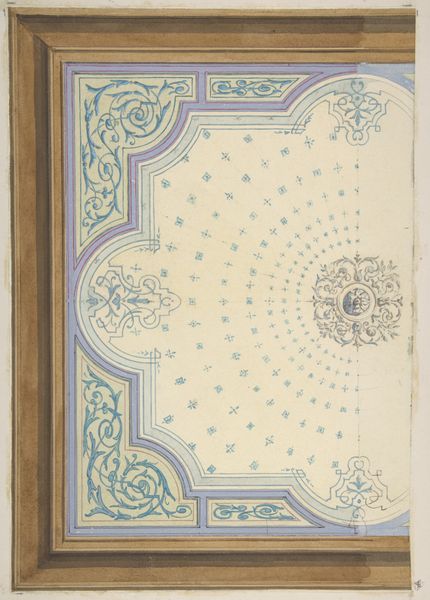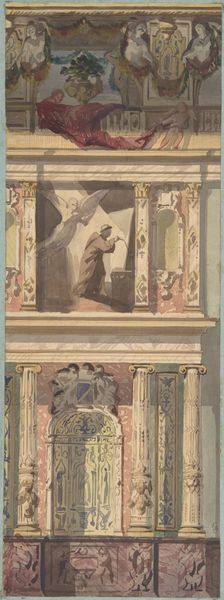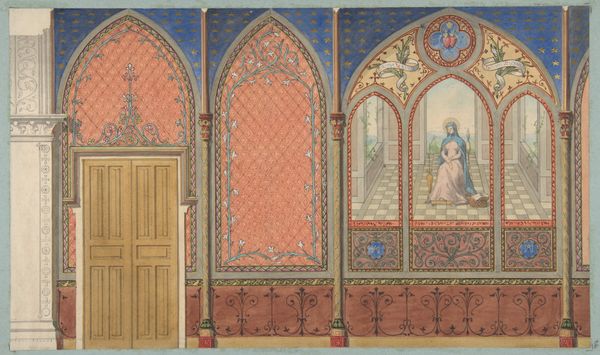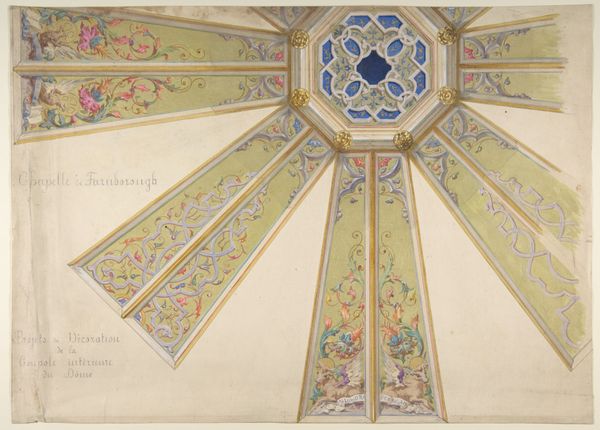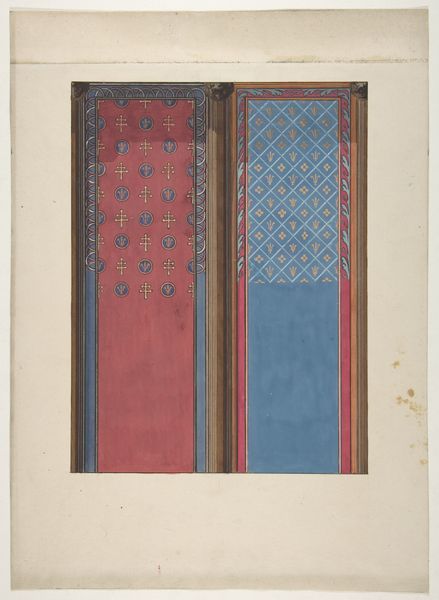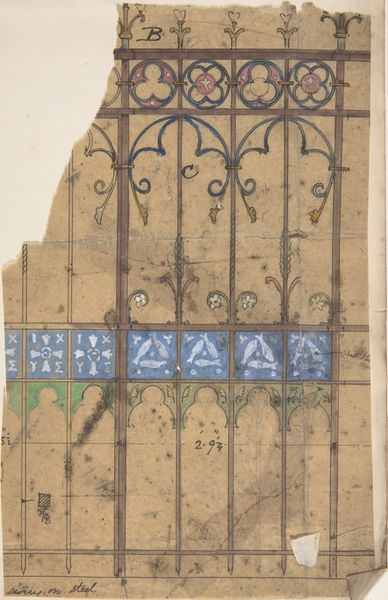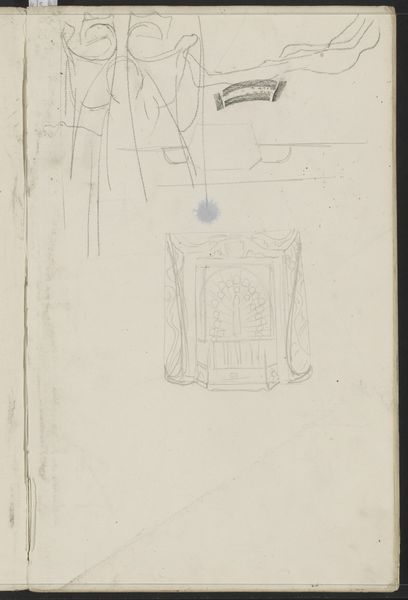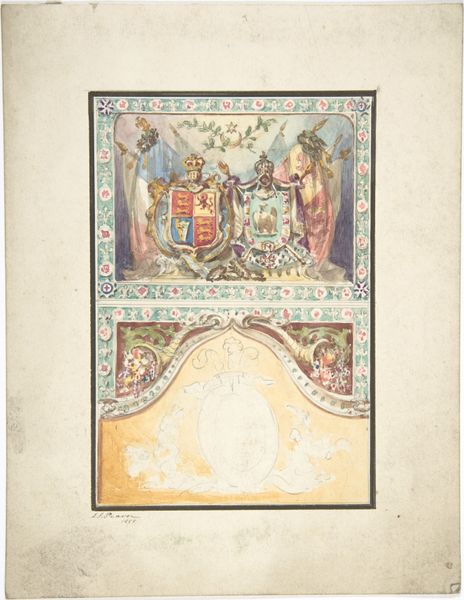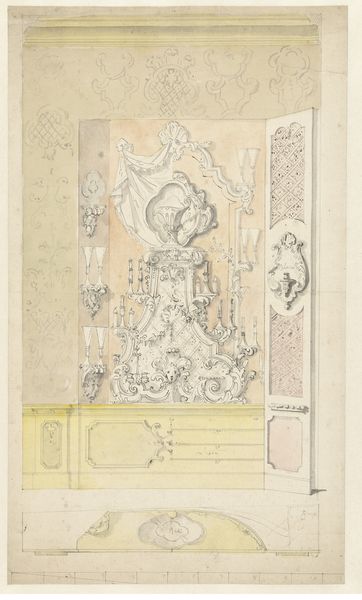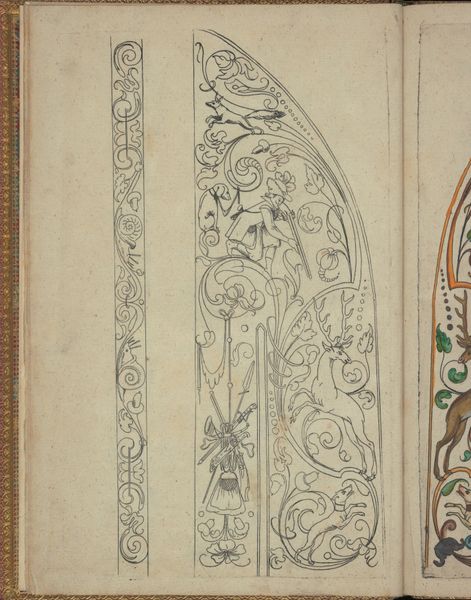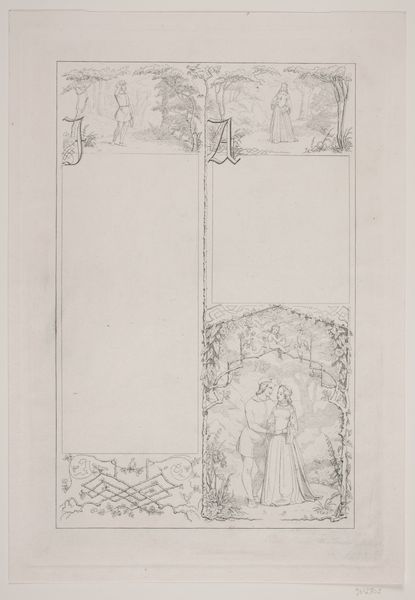
Ontwerp voor de Tweede Bossche Wand: visoen van Johannes op Patmos c. 1869 - 1925
0:00
0:00
drawing, coloured-pencil, paper, watercolor, ink, mural
#
drawing
#
coloured-pencil
#
medieval
#
landscape
#
figuration
#
paper
#
watercolor
#
ink
#
coloured pencil
#
geometric
#
symbolism
#
history-painting
#
mural
#
modernism
#
watercolor
Dimensions: height 270 mm, width 290 mm
Copyright: Rijks Museum: Open Domain
Curator: We’re looking at "Ontwerp voor de Tweede Bossche Wand: visoen van Johannes op Patmos", a design, likely from between 1869 and 1925, by Antoon Derkinderen. It employs ink, watercolor, and colored pencil on paper. Editor: Oh, this is interesting. There's a distinct sense of serenity… yet also an almost dizzying geometry in the top portion. It feels somehow... unfinished but incredibly deliberate in its planning. Curator: Deliberate is key. This is, as the title suggests, a design for a mural, a section of what would have been a much larger narrative cycle. Consider the careful layering of ink, watercolor, and coloured pencil. Editor: So, a material investigation of the visionary process. Derkinderen isn't just depicting a vision, he's architecting it through his selection of humble tools. It makes you wonder what those coats of arms that look to be in a sketch state might symbolize to the commissioner. Were the geometric choices imposed? Curator: Good point. The interplay of geometric forms with the organic—the figure of John, the eagles, the suggestion of a landscape—creates a dynamic tension. There's that circular mandorla that recalls the medieval illuminated manuscripts of biblical narratives, yet rendered with a certain modernistic clarity. Editor: And all of this, the deliberate archaism mingled with the modern, rendered in decidedly ordinary materials... almost defiant in a way. There’s nothing intrinsically “precious” about colored pencil or paper. He’s democratizing the very act of envisioning the sacred. It's a fascinating study in how something becomes art. Curator: Precisely. By exploring Derkinderen’s draft, it reminds me of how a sketch can often carry a powerful vision of its own, perhaps more potent because its execution contains the possibility of the image still becoming. Editor: Absolutely, and I am more convinced of its deliberate construction. It reminds us that materials and process are just as important as content in this kind of historic religious representation, if not more.
Comments
No comments
Be the first to comment and join the conversation on the ultimate creative platform.
